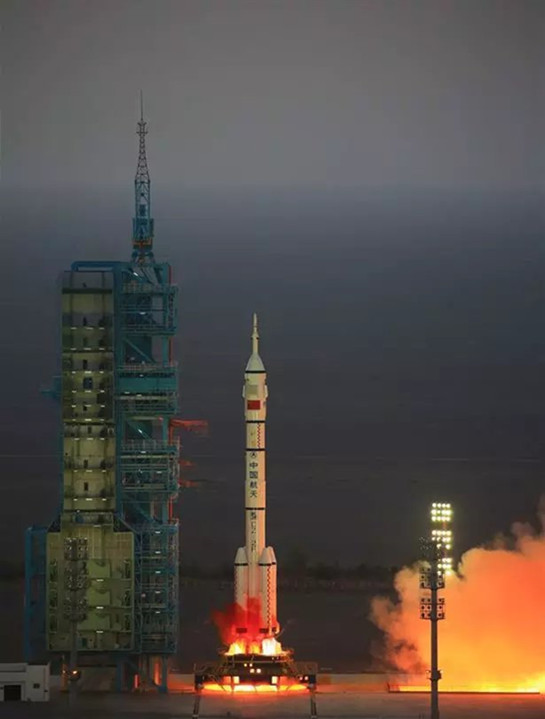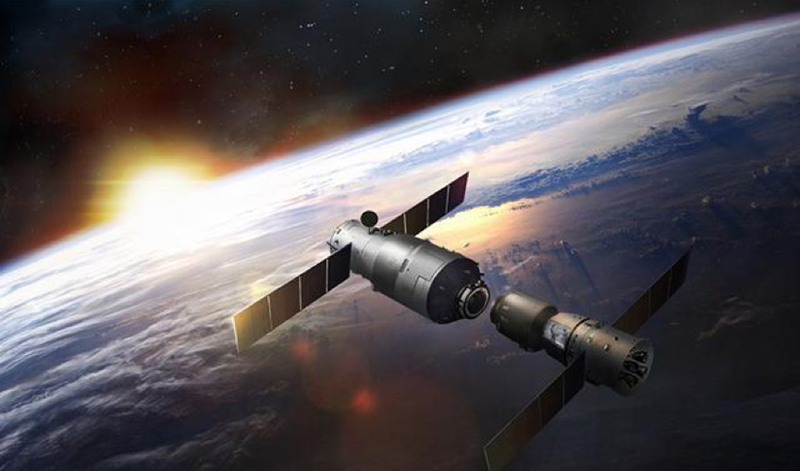

Recently, the Shenzhou XI spacecraft was sent skyward carrying two astronauts, and will dock with the Space Laboratory of Tiangong-2 which has launched successfully on Mid-Autumn Night. It traveled to 393 km high on a near circular orbit in the following two or three days. The planned mission will be the longest stay by Chinese astronauts in space. The two scientific and technological achievements of Tianjin University are on board: the world's first in-orbit brain-computer interaction and mental load, visual function and other functional ergonomic test systems and an astronauts dedicated damping cushion will both be on the Tiangong-2 and " Shenzhou XI " to complete their historical mission in space.
The in-orbit brain-computer interaction and mental load, visual function and other functional ergonomic test system was designed and developed by Tianjin University neural engineering team and the Chinese Astronauts Scientific Research and Training Center. Through this system, China will carry out the first human space brain-computer interaction experiment. The experiment will for first time obtain the change model of the physiological characteristics of the astronauts in space flight brain - computer interaction, to initially explore the feasibility of mind control on a space mission. Astronauts in the space environment encounter great limitations when completing complex tasks. The brain-computer interaction system may not rely on peripheral nerve and motor systems and transforms the thinking activities of astronauts into operational instructions, while monitoring the mental load and other neurological status of astronauts. During future space development, people and robots will work together to explore outer space, so people no longer need to operate the keyboard, mouse or even the hand controls and can use brain control technology directly for information exchange. In space, the astronauts are in a weightless, confined environment, which affects their emotions and physiology. Whether such technology can be used in space will be verified by the experiment.
Through the mental load and visual function test system, we can, in real-time, acquire and analyze the physiological information changes related to sensations and cognitive functions of the astronauts during tasks. In space flight, the blood and body fluids of the astronauts will redistribute and the brain's physiological state will have some changes. What kind of impact of these results currently have on the forefront of brain-computer technology will also be tested and studied in the experiment.
While the Shenzhou XI is successfully "flying skyward", the cushioning of the two astronauts was invented and developed by the Tianjin University Rapid Prototyping Center. As we know, since China's manned spaceflight project began in 1998, the Tianjin University Rapid Prototyping Center was appointed to develop the dedicated damping cushion for astronauts in the aircraft. From the "Shenzhou V" to "Shenzhou XI", the research projects of TJU in China's manned space project were always present. As an important part of the astronaut system, the cushion can effectively reduce the impact of the accelerations and bumps on the astronauts' body during the launch and landing of the spacecraft, thus maximizing the comfort and safety of astronauts during the launch and landing process.
As we know, in order to produce the "Shenzhou XI" cushion, pixels of three-dimensional measurement increased from 800,000 to two million and the amount of data acquisition points about astronauts increased from hundreds of thousands to millions. As a result, shaping cushions from the volume, design, production model, model validation, and then to the mold, mainly use the 3D technology. And compared with the first six generations of the cushions, the Shenzhou XI cushion has improved in the accuracy, comfort, and safety.






